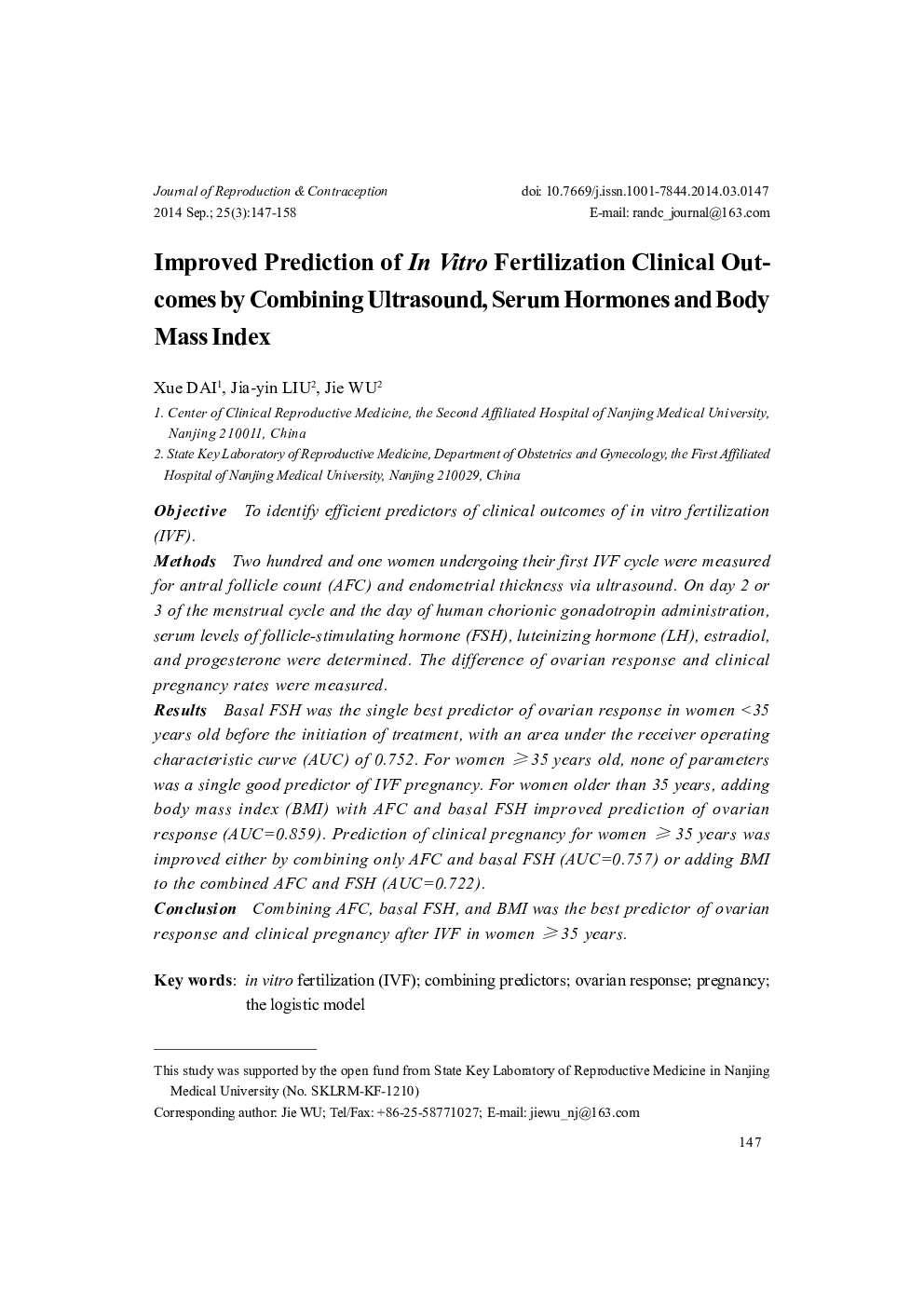| Article ID | Journal | Published Year | Pages | File Type |
|---|---|---|---|---|
| 3964219 | Journal of Reproduction and Contraception | 2014 | 12 Pages |
ObjectiveTo identify efficient predictors of clinical outcomes of in vitro fertilization (IVF).MethodsTwo hundred and one women undergoing their first IVF cycle were measured for antral follicle count (AFC) and endometrial thickness via ultrasound. On day 2 or 3 of the menstrual cycle and the day of human chorionic gonadotropin administration, serum levels of follicle-stimulating hormone (FSH), luteinizing hormone (LH), estradiol, and progesterone were determined. The difference of ovarian response and clinical pregnancy rates were measured.ResultsBasal FSH was the single best predictor of ovarian response in women <35 years old before the initiation of treatment, with an area under the receiver operating characteristic curve (AUC) of 0.752. For women ≥35 years old, none of parameters was a single good predictor of IVF pregnancy. For women older than 35 years, adding body mass index (BMI) with AFC and basal FSH improved prediction of ovarian response (AUC=0.859). Prediction of clinical pregnancy for women ≥ 35 years was improved either by combining only AFC and basal FSH (AUC=0.757) or adding BMI to the combined AFC and FSH (AUC=0.722).ConclusionCombining AFC, basal FSH, and BMI was the best predictor of ovarian response and clinical pregnancy after IVF in women ≥ 35 years.
